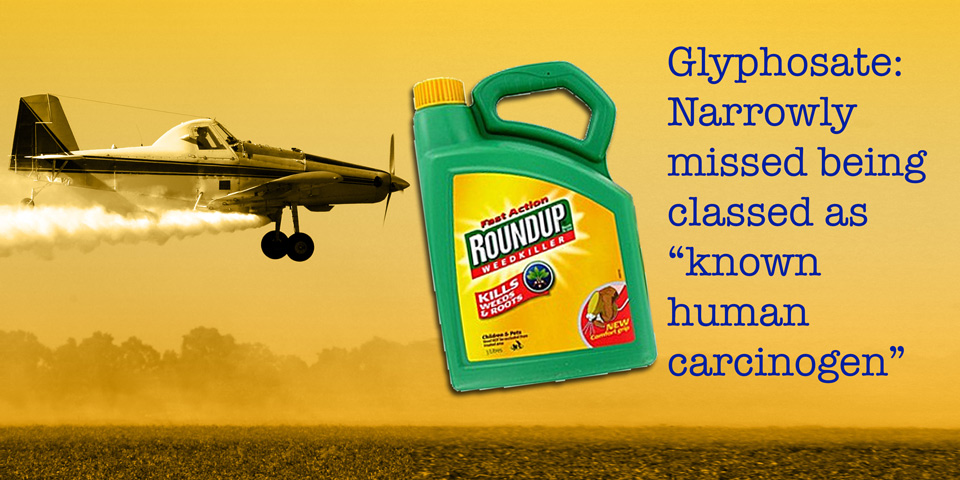
New Revelation about Glyphosate-Cancer Link
An excellent article by Andrew Cockburn in Harpers explains that anti-invasive species hysteria is prevalent across the US, from university biology departments to wildlife bureaucracies to garden clubs. Glyphosate is the weapon of choice for battling invaders that are seen as threatening native species. Over 90 percent of California’s land managers use the compound, which is particularly recommended as a slayer of eucalyptus trees. Last year, the federal government spent more than $2 billion to fight the alien invasion, up to half of which was budgeted for glyphosate and other poisons.
August 13, 2015 | Source: GM Watch | by
An excellent article by Andrew Cockburn in Harpers explains that anti-invasive species hysteria is prevalent across the US, from university biology departments to wildlife bureaucracies to garden clubs. Glyphosate is the weapon of choice for battling invaders that are seen as threatening native species. Over 90 percent of California’s land managers use the compound, which is particularly recommended as a slayer of eucalyptus trees. Last year, the federal government spent more than $2 billion to fight the alien invasion, up to half of which was budgeted for glyphosate and other poisons.
This resulting high exposure to glyphosate of the American public is an especially serious issue since the decision of the World Health Organisation’s cancer agency IARC that the herbicide is a “probable” carcinogen. Monsanto has tried to bamboozle the public about the significance of the IARC decision by confusing the 2A (probable human carcinogen) category that IARC put glyphosate into with the 2B category – “possible human carcinogen”, a group occupied by common substances like coffee and pickled vegetables. The message is: many of us drink coffee and eat pickled vegetables without worrying, so we shouldn’t worry about glyphosate either.
Cockburn’s article reveals that the discussion at IARC was NOT about whether glyphosate should be in category 2A (probable carcinogen) or category 2B (possible carcinogen). Instead the discussion was about whether glyphosate should be classed in category 1 (known human carcinogen).
The IARC group was headed by Aaron Blair, an epidemiologist who spent thirty years at the National Cancer Institute. Cockburn paraphrases Blair as follows:
“According to Blair, there were good grounds to declare that glyphosate definitely causes cancer” – in other words, it should be classed in category 1 as a known human carcinogen. But “This did not happen, [Blair] said, because ‘the epidemiologic data was a little noisy’. In other words, while several studies suggested a link, another study, of farmers in Iowa and North Carolina, did not. Blair pointed out that there had been a similar inconsistency in human studies of benzene, now universally acknowledged as a carcinogen. In any case, this solitary glitch in the data caused the group to list glyphosate as a probable (instead of a definite) cause of cancer.”
Monsanto CEO Hugh Grant called the IARC study “junk science” that should be retracted. But Blair replied, “Historically, the same thing happened with tobacco, the same thing happened with asbestos, the same thing happened with arsenic… It’s not junk science.”
The bottom line is that Blair has placed the row in historical perspective by comparing glyphosate with benzene, tobacco, asbestos and arsenic. And we all know how dangerous they are.
